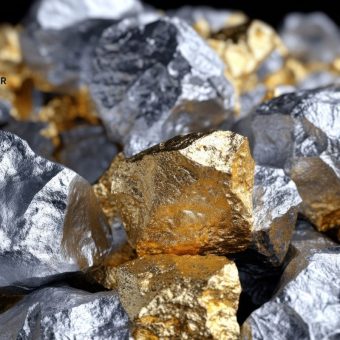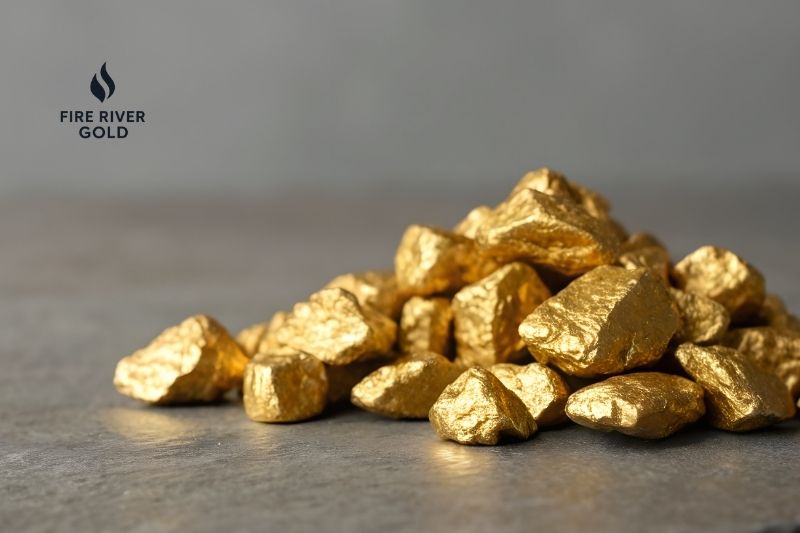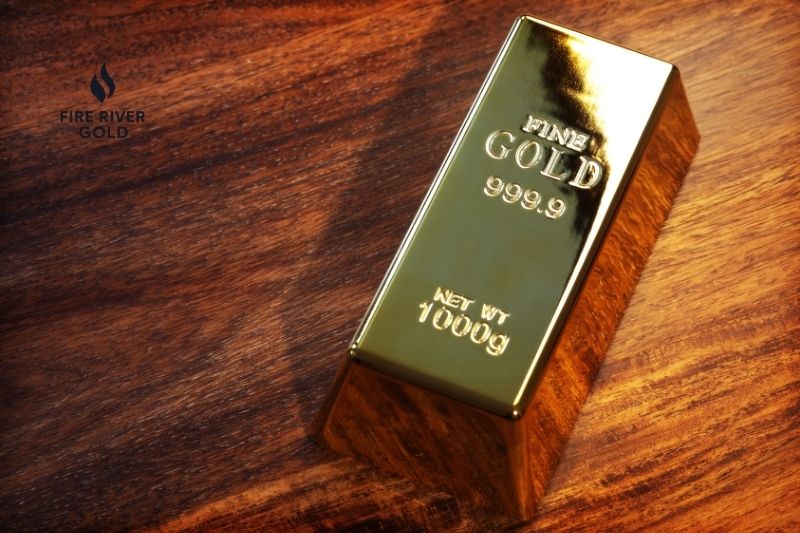Gold and Silver Stocks: A Full Breakdown

Gold has surged more than 60% in 2025, while silver is up nearly 80%, a rally driven by inflation fears, central bank buying, and booming industrial demand.
These gains have reignited interest in gold and silver stocks, which often move even more dramatically than the metals themselves.
As a precious metals expert, I’ve seen firsthand how these stocks can offer both opportunity and risk.
With global uncertainty and monetary shifts influencing markets, gold and silver stocks are becoming a focal point for investors looking for leverage on metal prices and protection against volatility.
In this article, I’ll cover:
- What gold and silver stocks are and how they differ from physical metals.
- The role of ETFs and other investment vehicles in this sector.
- The bullish trends shaping the 2025 outlook for gold and silver.
- The key drivers that affect stock performance in this space.
- The risks and strategies every investor should understand.
You’ll soon know how to assess gold and silver stocks, identify the best companies to watch, and build a strategy that aligns with your investment goals and risk tolerance.
What Are Gold and Silver Stocks?
Gold and silver stocks represent ownership in companies involved in the exploration, extraction, processing, or trading of gold and silver.
These stocks are a way for investors to gain exposure to the precious metals market without holding physical gold or silver.
They can offer amplified returns compared to bullion, but they also come with operational and market-related risks.
Before taking the leap into the world of gold and silver stocks, speak with your investment advisor for advice on your specific situation.
Mining Companies
Mining stocks form the core of gold and silver stock investing. These are companies that explore for new deposits, develop mining operations, and produce refined metals.
The largest and most established players in this space include:
- Barrick Mining Corporation: One of the largest gold mining companies globally, with operations in North America, South America, Africa, and the Middle East.
- Newmont Corporation: The only gold company listed on the S&P 500, known for its strong balance sheet and consistent production.
- Agnico Eagle Mines: A Canadian gold producer with a strong presence in politically stable mining regions.
These companies benefit when gold and silver prices rise, as their profit margins typically expand.
However, they also face risks such as rising production costs, political instability in mining regions, and environmental regulations.
ETFs and ETPs
Exchange-traded funds (ETFs) and exchange-traded products (ETPs) offer another way to participate in the gold and silver market. They are designed to track the price of the metals or a basket of mining stocks.
- SPDR Gold Shares (GLD): One of the most popular gold ETFs, GLD is backed by physical gold held in vaults and seeks to reflect the performance of the price of gold bullion.
- iShares Silver Trust (SLV): A silver-focused ETF that offers exposure to the price of silver without the need to store physical metal.
These products provide liquidity and ease of trading, but they come with management fees and structural risks, such as counterparty exposure and tracking errors.
Stock Indices
To monitor overall performance in the sector, investors often turn to indices such as the Philadelphia Gold and Silver Index (XAU).
This benchmark includes 30 of the largest publicly traded mining companies and offers a snapshot of the health of the gold and silver stock sector.
The Function of Gold and Silver in Investing
Gold and silver have been a major part of financial systems for centuries. They are seen as stores of value, especially in times of economic stress, and are used by investors to hedge against inflation and currency devaluation.
Gold as a Store of Value
Gold has a long history of maintaining purchasing power across centuries. It is not tied to any single currency or government and tends to perform well during times of financial instability.
Investors often turn to gold when inflation rises or when fiat currencies weaken.
Gold is also favored by central banks, which hold it as part of their foreign currency reserves. This institutional demand supports its reputation as a reliable store of value.
Silver’s Dual Role
Silver is unique in that it serves both as a precious metal and an industrial commodity. While it is used for investment, jewelry, and coinage, about 40% of silver demand comes from industrial applications. These include:
- Solar panels.
- Electric vehicles.
- Electronics and semiconductors.
This dual role gives silver a different risk-reward profile than gold. It can benefit from both safe-haven demand and industrial growth, but it is also more volatile.
Inflation and Safe-Haven Demand
Both gold and silver tend to perform well in inflationary environments. When the purchasing power of paper currencies declines, investors seek assets with intrinsic value.
Precious metals, which cannot be printed or devalued by central banks, often rise in such conditions.
Safe-haven demand also increases during geopolitical tensions, stock market corrections, and economic downturns, further supporting prices.
Market Trends and 2025 Outlook

Recent Performance
Gold prices have climbed over 60% this year, while silver has surged nearly 80%. These gains are being fueled by:
- High inflation and currency weakness.
- Strong central bank gold purchases.
- Robust industrial demand for silver, especially in green technologies.
This momentum has carried into the gold and silver stock sector, with many mining companies seeing outsized gains relative to the metals themselves.
Forecasts From Analysts
Leading financial institutions are forecasting continued strength in the market, with some forecasts predicting a price of $5,500 per ounce in three years.
Silver is also expected to remain strong, with some analysts predicting prices could exceed $70 per ounce in the next several years if industrial demand continues to grow and supply remains constrained.
Central Bank Activity
Central banks around the world have been buying gold at record levels. This activity reflects a desire to diversify away from the U.S. dollar and increase holdings in real assets.
The scale and consistency of these purchases have created a strong underlying bid for gold, supporting both bullion and gold mining stocks.
Factors That Influence Gold and Silver Stocks
Commodity Price Movements
Mining stocks are leveraged to the price of gold and silver. When metal prices rise, the profit margins of mining companies can expand significantly.
Conversely, when prices fall, these stocks can drop more sharply than the metals themselves, a fact I warn potential investors of routinely.
Interest Rates and Currency Trends
Precious metals tend to perform well in low-interest-rate environments. Lower rates reduce the opportunity cost of holding non-yielding assets such as gold and silver.
A weaker U.S. dollar also supports higher metal prices, as it makes them cheaper for foreign buyers.
Industrial Demand and Supply Constraints
Silver’s industrial demand is a key driver of its price. The metal is critical to renewable energy and electronics sectors.
At the same time, mining output has struggled to keep pace with demand, creating supply deficits that can push prices higher.
Risk Considerations When Investing
Volatility and Market Cycles
Precious metals stocks are more volatile than the underlying metals. They are affected by broader equity market trends, investor sentiment, and company-specific news.
Operational and Geopolitical Risks
Mining is a complex and capital-intensive business. Companies face challenges such as:
- Permit delays and regulatory hurdles.
- Rising labor and energy costs.
- Political instability in mining regions.
These risks can impact production timelines, profitability, and stock performance.
Structural Risks in ETFs
While ETFs such as GLD and SLV provide easy access to metal prices, they come with structural concerns.
Management fees can erode returns over time, and there is always some level of counterparty risk in financial products.
Strategies for Different Investor Profiles
Conservative: Physical Metals and Major Miners
Holding physical gold and silver or investing in top-rated gold stocks is a prudent strategy. Major producers such as Newmont and Barrick Gold offer relatively lower risk due to their scale and diversified operations.
Moderate: Balanced Mix of Metals and Stocks
A balanced portfolio might include a mix of physical metals, gold and silver stocks, and ETFs.
Aggressive: Junior Miners and Silver-Leveraged Plays
Aggressive investors may consider junior mining companies and silver stocks with higher risk-reward ratios, such as:
- Avino Silver and Gold Mines
- Americas Gold and Silver
- Aya Gold and Silver
These companies are smaller and more volatile but can outperform significantly during bull markets.
Noteworthy Stocks and Companies To Watch
Top Gold Stocks
- Newmont Corporation
- Barrick Gold
- Agnico Eagle Mines
Best Silver Stocks
- Avino Silver and Gold Mines
- Americas Gold and Silver
- Aya Gold and Silver
Regional Highlights
Investors are also watching region-specific junior mining plays such as Arizona Gold and Silver stock, which may offer compelling value based on local production developments and regulatory environments.
Tools and Indices for Tracking Performance
Philadelphia Gold and Silver Index (XAU)
This index tracks 30 key gold and silver mining companies. It is a valuable tool for benchmarking and sector analysis.
Silver and Gold Tickers and ETFs To Follow
- GLD (SPDR Gold Shares)
- SLV (iShares Silver Trust)
- GDX (VanEck Gold Miners ETF)
- SIL (Global X Silver Miners ETF)
Analyst Reports and Technical Tools
Investors should regularly consult:
- Price charts and technical indicators.
- Analyst forecasts and research reports.
- Economic data such as inflation and interest rates.
Building a Smarter Precious Metals Strategy
Gold and silver stocks offer a compelling way to gain leveraged exposure to rising metal prices while diversifying a broader investment portfolio.
With gold up over 60% and silver nearly 80% in 2025, many investors see this sector as a timely opportunity.
That said, understanding the dynamics behind gold and silver stock price movements is critical. From mining operations to ETF structures and industrial demand, each element plays a role in shaping returns.
Whether you’re a conservative investor seeking stability or an aggressive trader chasing high-growth silver stocks, there’s a strategy that fits your profile.

